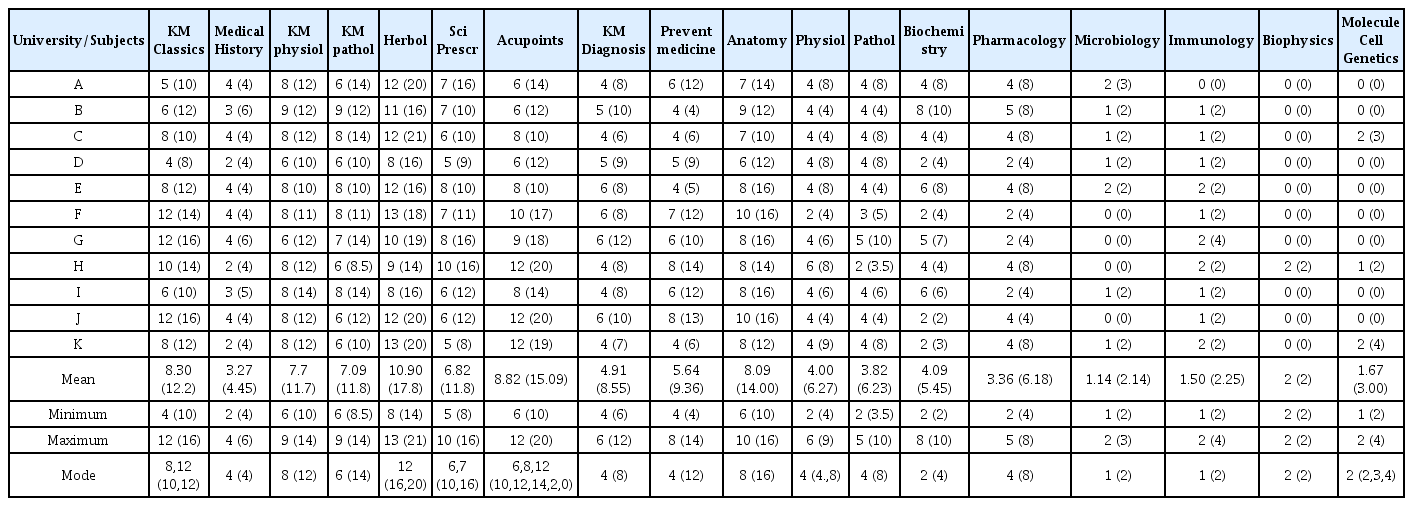A Survey on the Educational Status of Basic Korean Medicine and Basic Medical Science in Colleges of Korean Medicine in 2020
Article information
Abstract
Objectives
This study was aimed to present a summary and analysis of a survey on the educational status of basic Korean medicine and basic medical science in colleges of Korean medicine nationwide.
Methods
The data on the curriculum and weekly education plans were acquired in the first half of 2020. Data showing the educational status and contents of basic Korean medicine and basic medical science were extracted.
Results
Most of the colleges were providing a subject-based education. All subjects of basic Korean medicine were included in the required courses for majors, and most of them appeared to have developed and been using common main textbooks and standardized educational contents. However, there were some subjects in which the education period was dispersed until the 3rd and 4th grades, or in which discussions to develop and use common textbooks and standardized educational content were required. Most of the subjects of basic medical science were also educated as required courses for majors, but there were some subjects with a low curriculum establishment rate, and these could be considered as areas to be reinforced first when reorganizing the curriculum.
Conclusions
It is expected that the findings of this study would be a basis for exploring the ways to concrete changes that are desirable and also realistically feasible when reorganizing the curriculum of colleges of Korean medicine in the near future.

